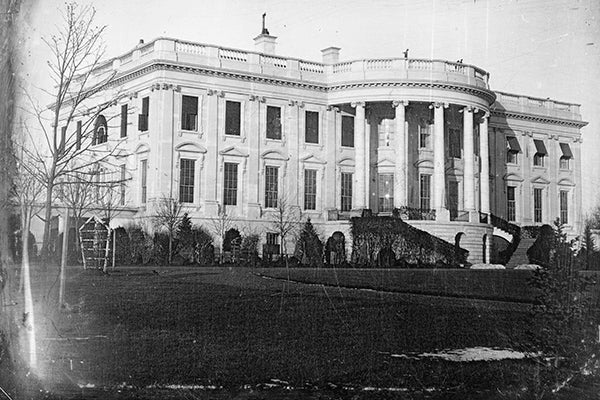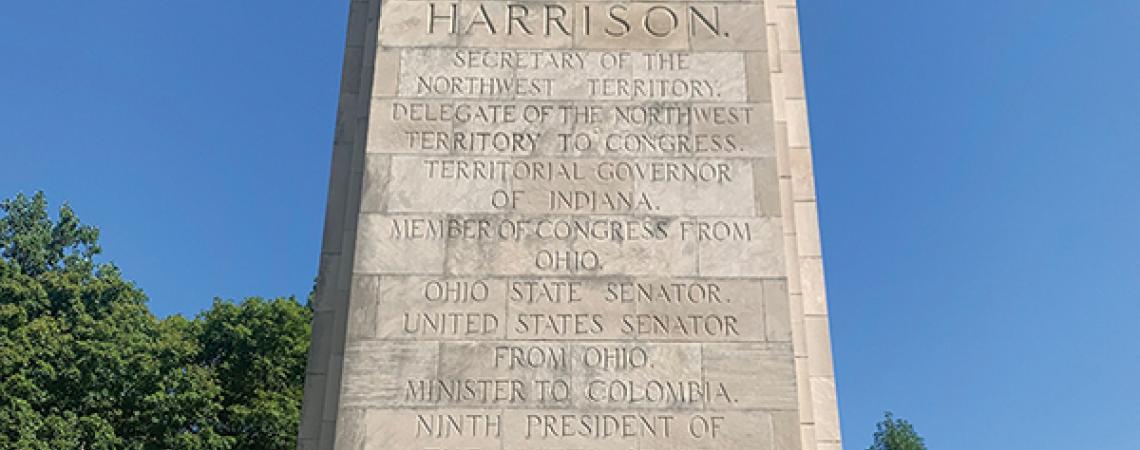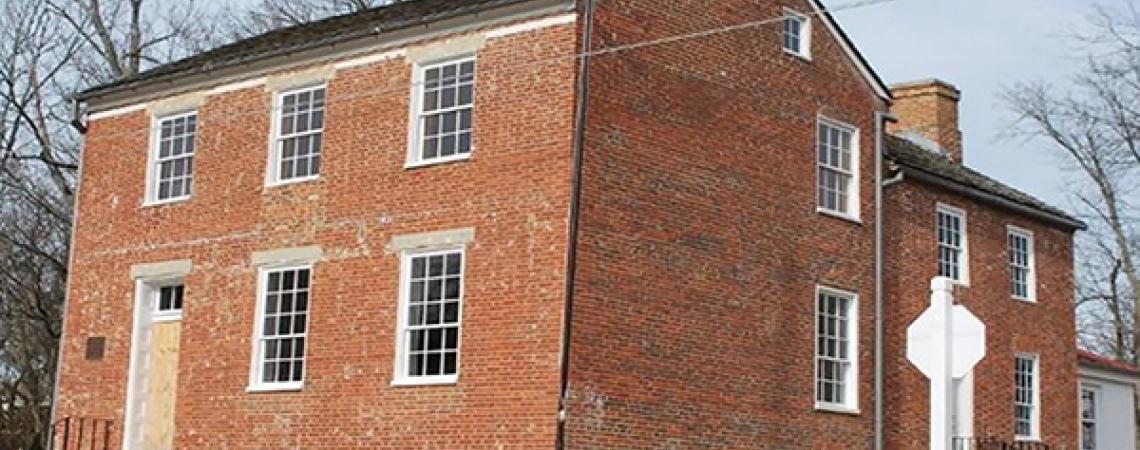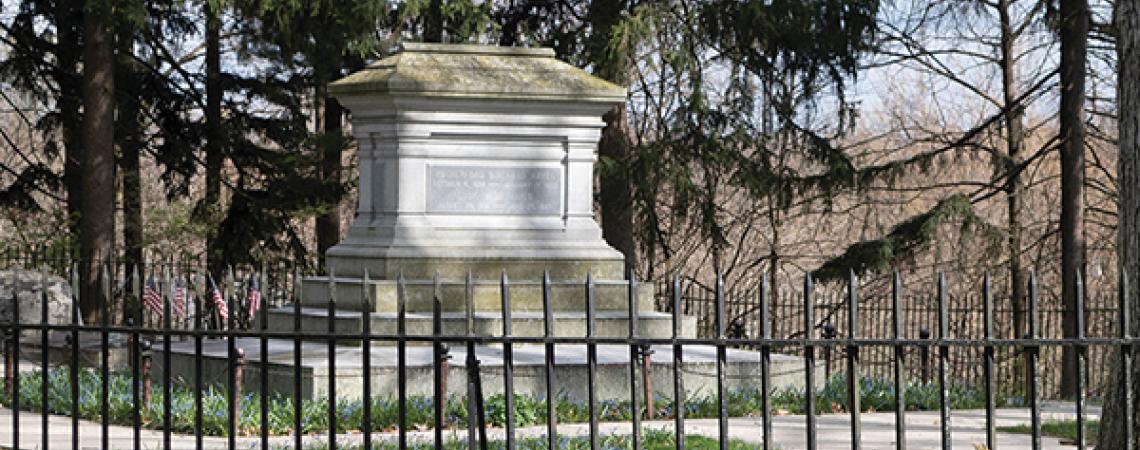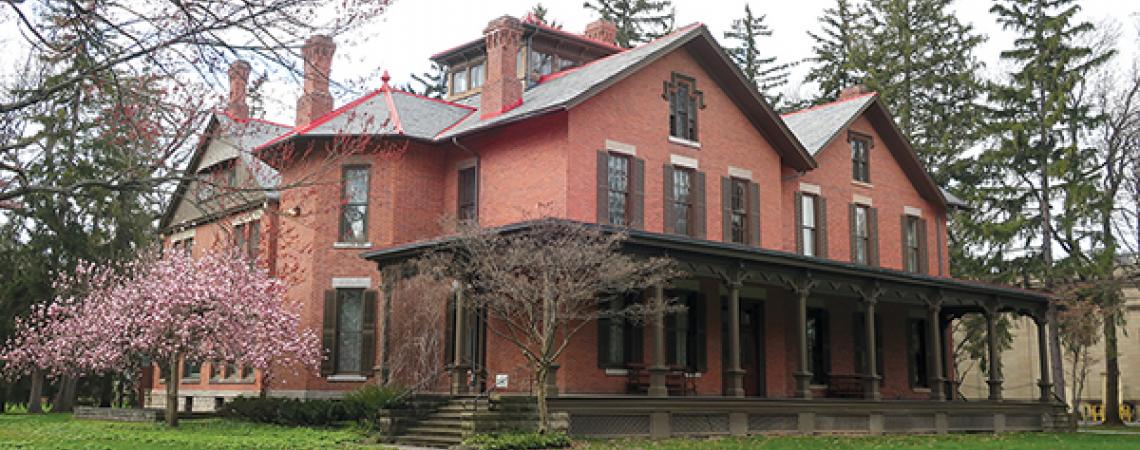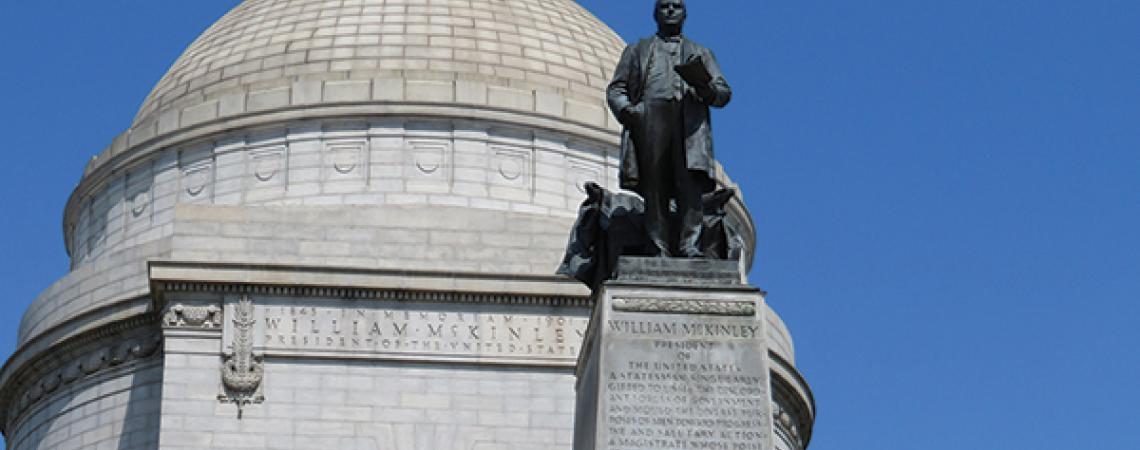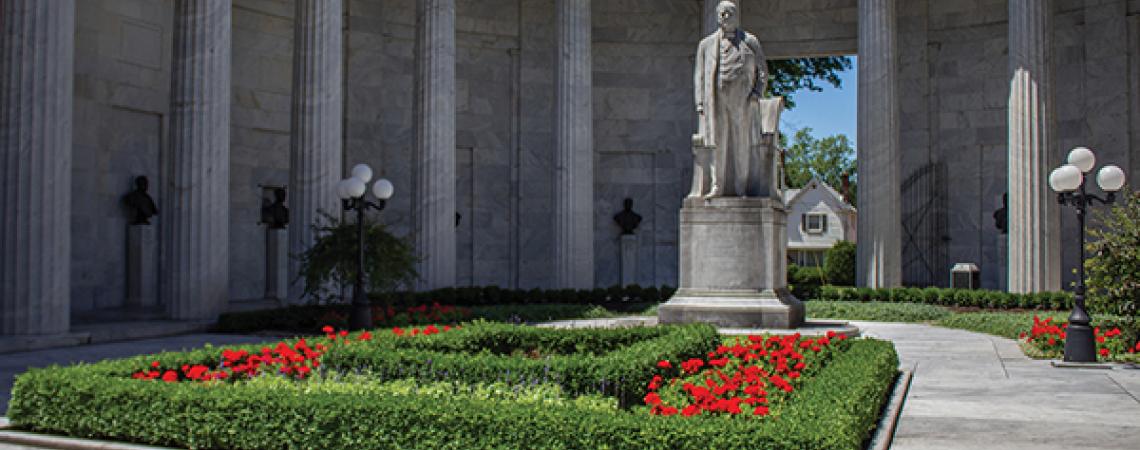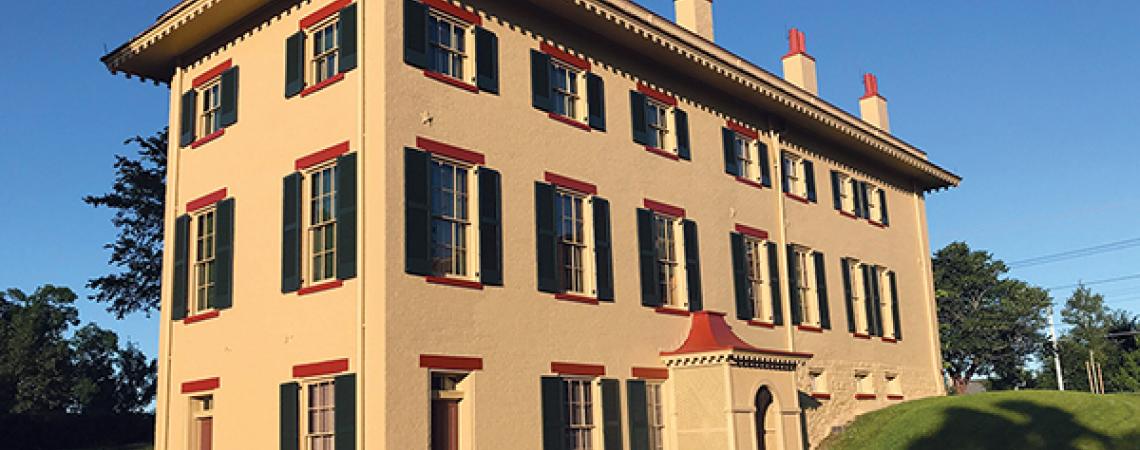Why is Ohio called the “Mother of Presidents”? Consider this: Since 1776, there have been upward of 500 million Americans; some 12,000 served in Congress, but only 44 have been sworn in as President of the United States. Of those 44, eight came from Ohio, and during the half-century between Reconstruction and the Roaring Twenties, seven of those Ohioans — all Republicans — dominated the White House and influenced the nation in matters great and small.
Limestone obelisk marking Harrison’s tomb.
Since 2020 is a presidential election year and the 100th anniversary of the last time an Ohioan — Warren G. Harding in 1920 — won the White House, it’s an especially good time to take stock of the state’s eminent eight. We hereby present a compendium of Ohio presidents that includes destinations where you can learn more about their rare and remarkable lives.
William Henry Harrison
9th President (1841)
Born: 1773, Virginia
Resumé: Joined Army in 1791 and sent to Ohio Territory to fight in Indian wars. Eloped with a Cincinnati land baron’s daughter; settled on a North Bend farm. Fought in Battle of Fallen Timbers. Victorious general, battles of Tippecanoe and Thames. Indiana Territory governor. Congressman. Ohio senator. U.S. senator.
Presidency: Whig candidate Harrison’s “log cabin” campaign introduced rambunctious rallies and catchy slogans (“Tippecanoe and Tyler Too”) to presidential politics. Delivered 105-minute inauguration address in a snowstorm; got pneumonia and died 32 days later.
Facts: First president to perish in office. Gave longest inaugural oration; served shortest term.
Must-see: Marked by a limestone obelisk, the Harrison Tomb in North Bend commands panoramic views of the Ohio River and three states. The nearby Harrison-Symmes Memorial Foundation Museum displays campaign memorabilia such as a soup bowl showing Harrison’s likeness.
Ulysses S. Grant
18th President (1869–1877)
Born: 1822, Point Pleasant, Ohio
Resumé: West Point graduate. Farmer. Businessman. Commanding General, Union Army.
Presidency: Pro Reconstruction and Fifteenth Amendment. Created Justice Department to fight for civil rights. Though a master military strategist, Grant was a raw recruit politically, and scandal-ridden appointees disgraced his White House tours of duty.
Facts: First four-star Army general. First president to run against a woman. Valiantly conquered bankruptcy by writing his bestselling autobiography while dying of cancer.
Must-see: The U.S. Grant Birthplace was probably the nation’s first mobile home; after the Civil War, the Point Pleasant cottage toured the U.S. on flatcar. In Georgetown, the U.S. Grant Boyhood Home and Grant Schoolhouse contain memorabilia ranging from the family cradle to his childhood drawings, and an animatron of Grant at age 15 tells visitors stories about his love of horses and favorite subject (math).
James Abram Garfield
20th President (1881)
Born: 1831, present-day Moreland Hills, Ohio
Resumé: Muleskinner. Professor. Lawyer. Ohio senator. Major General, Union Army. Congressman.
Presidency: A dark horse candidate, Garfield won the 1880 election’s popular vote by a nose. He pledged to end the spoils system but shortly after taking office was shot, ironically, by a disgruntled office seeker. Garfield’s deathwatch was likely the nation’s first media event.
Facts: Last president born in a log cabin. Phi Beta Kappa. Could simultaneously write Greek with one hand and Latin with the other.
Must-see: The James A. Garfield National Historic Site in Mentor, where he invented the front porch campaign at his farmhouse. “Train tracks ran through Garfield’s farm,” says Todd Arrington, site manager, “and 20,000 people came here to see him.” His widow, Lucretia, returned to the farmhouse and pioneered presidential libraries by building a beautiful addition to preserve his books, correspondence, and mementos, like the funeral wreath Queen Victoria sent.
William McKinley
25th President (1897–1901)
Born: 1843, Niles, Ohio
Resumé: Brevet Major, Union Army. Lawyer. Congressman. Ohio governor.
Presidency: Made U.S. a global power by winning Spanish-American War. Open Door Policy with China. Shot by an anarchist at Pan-American Exposition.
Facts: Last Civil War veteran in White House. A devoted husband, McKinley campaigned from the front porch of his Canton home, rather than leave his invalid wife. After his assassination, Ohio made McKinley’s trademark red carnation the state flower.
Must-see: The National McKinley Birthplace Memorial in Niles looks like a Greek temple and houses a museum. In Canton, the McKinley Memorial majestically surrounds his tomb and rivals any monument in Washington, D.C. The adjacent McKinley Presidential Library & Museum has the world’s largest collection of McKinley artifacts — including a diamond tiara obtained from Pawn Stars star Rick Harrison — and a family-friendly, interactive science center. “It’s the most unusual presidential library you’ll ever visit because the focus is not solely on a president,” says Kimberly Kenney, executive director.
William Howard Taft
27th President (1909–1913)
Born: 1857, Cincinnati
Resumé: Lawyer. Solicitor general. Court of Appeals judge. Governor-general, Philippines. Secretary of war. Supreme Court justice.
Presidency: Trust-buster; initiated Dollar Diplomacy; appointed six Supreme Court justices. His reelection bid bombed after Theodore Roosevelt ran as a progressive Bull Moose, but Taft achieved his lifelong ambition when President Harding put him on the Supreme Court.
Facts: First president buried in Arlington National Cemetery. Only person to serve as president and chief justice. At 300-plus pounds, Taft was a political heavyweight, but the story that he got stuck in a White House bathtub doesn’t hold water.
Must-see: Cincinnati’s William Howard Taft National Historic Site preserves the handsome house where he was born and raised, and guides tell visitors about his love of baseball. “Few people realize,” says Reginald Murray, acting operations chief, “that he started the tradition of throwing out the first pitch.”
Warren Gamaliel Harding
29th President (1921–1923)
Born: 1865, present-day Blooming Grove, Ohio
Resumé: Publisher/editor. Ohio senator. Ohio lieutenant governor. U.S. senator.
Presidency: Promised “return to normalcy” while campaigning in Marion from his home’s front porch. Championed civil rights. Established Budget and Veterans bureaus. Convened first disarmament conference. Picked stellar cabinet members, including Herbert Hoover, but corrupt cronies spawned scandals — particularly Teapot Dome — that stigmatized him.
Facts: First president elected after women’s suffrage, making Florence Harding the first presidential wife to vote for her husband. First president to ride to inauguration in automobile. Lost White House china in poker game.
Must-see: Celebrate the centennial of Harding’s 1920 election at the Warren G. Harding Presidential Sites in Marion: the Harding Memorial, which houses the Hardings’ graves; the meticulously restored Harding Home; and the new Harding Presidential Library & Museum. Sherry Hall, site manager, says, “Harding ushered in America’s modern era, and the museum puts him and his presidency in context for the first time.”
